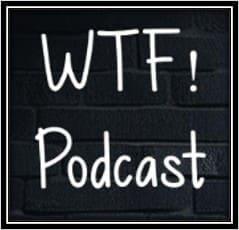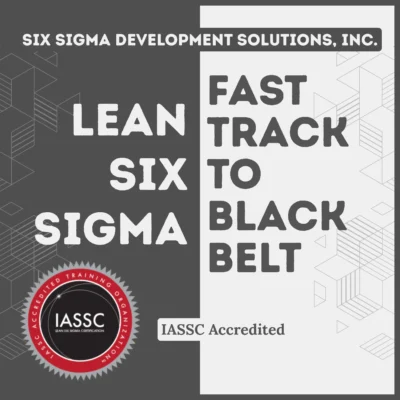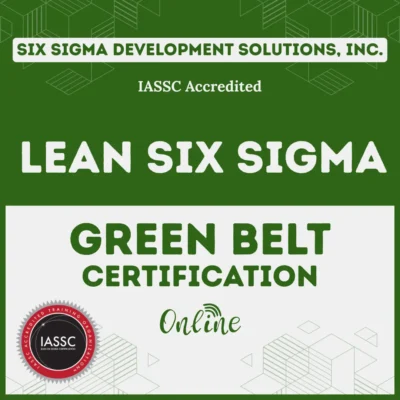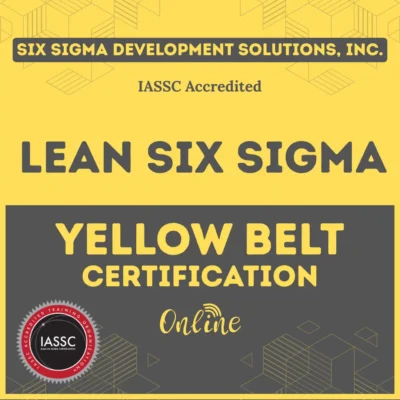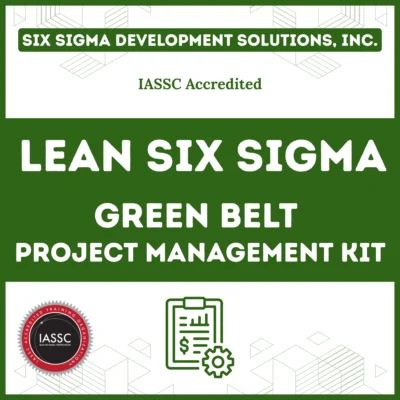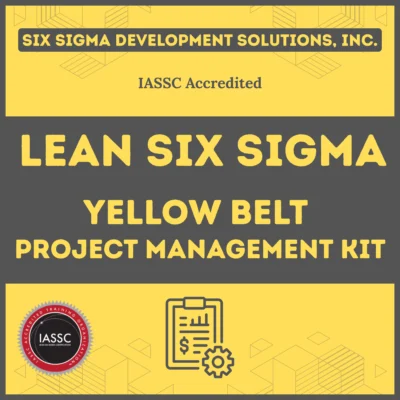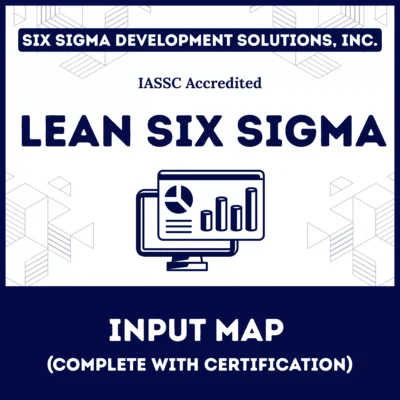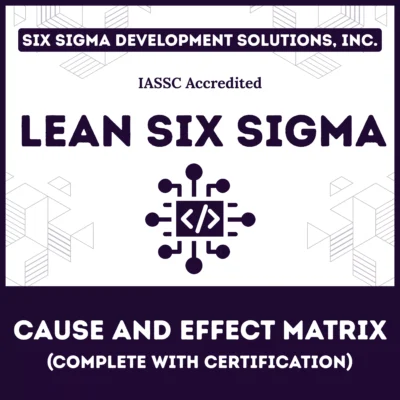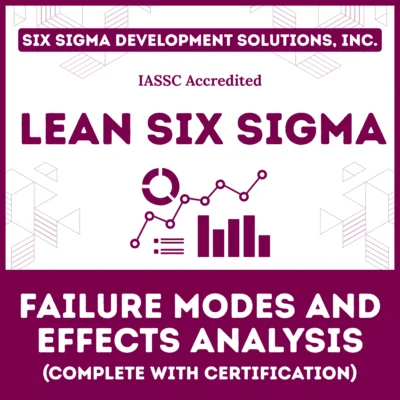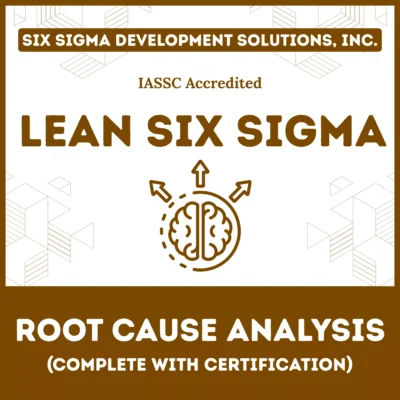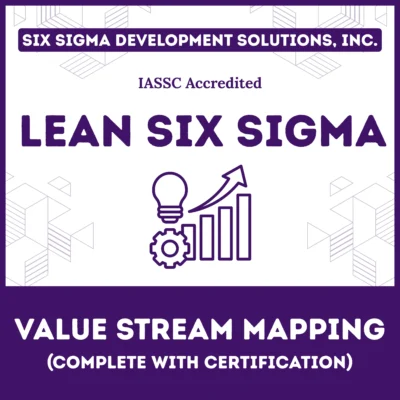The 8 pillars of TPM are a set of actionable principles that form the fundament of total productive maintenance (TPM). The aim of the TPM pillars is to proactively maintain equipment and machinery, thereby improving their performance, dependability, and longevity.
Total Productive Maintenance represents a revolutionary shift from reactive maintenance to proactive equipment management. This comprehensive methodology transforms how organizations approach equipment reliability, quality control, and operational efficiency.
Furthermore, TPM creates a culture where every employee takes ownership of equipment performance and contributes to continuous improvement initiatives.
Table of contents
- What Are the 8 Pillars of TPM?
- Pillar 1: Autonomous Maintenance – Empowering Operators
- Pillar 2: Focused Improvement (Kaizen) – Continuous Enhancement
- Pillar 3: Planned Maintenance – Strategic Asset Management
- Pillar 4: Quality Maintenance – Defect Prevention
- Pillar 5: Early Equipment Management – Design for Reliability
- Pillar 6: Training and Education – Building Competence
- Pillar 7: Safety, Health, and Environment – Protecting People and Planet
- Pillar 8: Office TPM – Administrative Excellence
- Benefits of Implementing the 8 Pillars of TPM
- Measuring TPM Success: Key Performance Indicators
- Technology Integration in Modern TPM
- Final Words
- Frequently Asked Questions (FAQs) on Pillars of TPM
- Related Articles
What Are the 8 Pillars of TPM?
The eight pillars of TPM form the foundation of effective maintenance management, each addressing specific aspects of equipment reliability and operational excellence. These interconnected pillars work together to eliminate the major losses that plague manufacturing operations: equipment failures, setup delays, minor stoppages, reduced speeds, startup losses, quality defects, and safety incidents.

The eight pillars of TPM are mostly focused on proactive and preventative techniques for improving equipment reliability. Each pillar represents a structured approach to addressing different maintenance challenges while building organizational capabilities that support sustainable improvements.
The comprehensive framework addresses both technical and human factors that influence equipment performance. Additionally, the pillars ensure that maintenance activities align with business objectives and create measurable value for the organization.
Public, Onsite, Virtual, and Online Six Sigma Certification Training!
- We are accredited by the IASSC.
- Live Public Training at 52 Sites.
- Live Virtual Training.
- Onsite Training (at your organization).
- Interactive Online (self-paced) training,
Pillar 1: Autonomous Maintenance – Empowering Operators
Autonomous maintenance fundamentally changes the relationship between operators and equipment. Autonomous maintenance is an approach to equipment maintenance that involves giving machine operators responsibility for basic upkeep tasks. This allows dedicated maintenance technicians to focus on more complex maintenance tasks.
This pillar transforms operators from passive equipment users into active maintenance partners. Operators learn to perform routine maintenance tasks, conduct basic inspections, and identify potential problems before they escalate into major failures. Consequently, this approach reduces the workload on specialized maintenance teams while improving equipment reliability.
Autonomous Maintenance Process
The autonomous maintenance process follows seven structured steps:
Step 1: Initial Cleaning and Inspection Operators thoroughly clean equipment to identify abnormalities, loose bolts, oil leaks, and wear patterns. This deep cleaning reveals hidden problems and establishes baseline conditions for ongoing monitoring.
Step 2: Eliminate Sources of Contamination Teams identify and address root causes of dirt, debris, and contamination. This includes improving accessibility for cleaning and implementing measures to prevent future contamination.
Step 3: Establish Cleaning and Lubrication Standards Organizations develop standardized procedures for routine cleaning and lubrication tasks. These standards specify frequencies, methods, and materials required for each maintenance activity.
Step 4: Conduct General Inspections Operators learn to perform systematic inspections using checklists and visual management tools. Training focuses on detecting abnormal conditions and understanding equipment functions.
Step 5: Develop Autonomous Inspection Standards Teams create comprehensive inspection procedures that operators can execute independently. These standards include measurement criteria and decision-making guidelines for addressing issues.
Step 6: Implement Workplace Organization Organizations apply 5S principles to maintenance areas, ensuring tools and supplies are properly organized and readily available. This step improves efficiency and reduces time spent searching for resources.
Step 7: Achieve Full Autonomous Maintenance The final step involves continuous improvement of autonomous maintenance activities and expansion to additional equipment areas. Operators become fully competent in basic maintenance tasks.
Pillar 2: Focused Improvement (Kaizen) – Continuous Enhancement
Focused improvement is the first pillar of TPM. The priorities are clear: improve, improve, and improve continuously. To avoid the loss of equipment, talent, raw materials, and energy, the whole team must share this vision.
Focused improvement targets specific losses and inefficiencies through systematic problem-solving approaches. Cross-functional teams use data-driven methods to identify improvement opportunities and implement sustainable solutions. Moreover, this pillar emphasizes the importance of measuring results and standardizing successful practices.
The focused improvement process utilizes various tools and methodologies:
Root Cause Analysis (RCA) Teams investigate equipment failures and quality issues to identify underlying causes. This systematic approach prevents problem recurrence by addressing fundamental issues rather than symptoms.
Overall Equipment Effectiveness (OEE) Organizations measure equipment performance using availability, performance efficiency, and quality metrics. OEE provides a comprehensive view of equipment losses and improvement opportunities.
Kaizen Events Structured improvement workshops bring together diverse team members to solve specific problems within defined timeframes. These intensive sessions generate rapid improvements and build problem-solving capabilities.
Single-Minute Exchange of Dies (SMED) Teams reduce setup and changeover times through systematic analysis and improvement of setup procedures. This methodology significantly improves equipment utilization and flexibility.
Value Stream Mapping Organizations map material and information flows to identify waste and improvement opportunities. This visual tool helps teams understand how equipment performance impacts overall value creation.
Also Read: What is Total Productive Maintenance?
Pillar 3: Planned Maintenance – Strategic Asset Management
Planned maintenance. The process of routine maintenance being planned represents a systematic approach to equipment care that prevents failures through scheduled interventions. This pillar ensures critical maintenance activities occur at optimal intervals based on equipment condition, usage patterns, and manufacturer recommendations.
Planned maintenance encompasses several key strategies:
Preventive Maintenance (PM) Time-based maintenance activities performed at regular intervals to prevent equipment degradation. These activities include inspections, adjustments, parts replacement, and system testing.
Predictive Maintenance (PdM) Condition-based maintenance that uses various monitoring techniques to assess equipment health. Technologies such as vibration analysis, thermal imaging, and oil analysis enable precise timing of maintenance interventions.
Reliability-Centered Maintenance (RCM) A systematic approach to determining maintenance requirements based on equipment criticality and failure modes. RCM ensures maintenance resources focus on activities that provide the greatest value.
Maintenance Planning and Scheduling Organizations develop comprehensive maintenance plans that optimize resource utilization and minimize production disruptions. Effective planning reduces maintenance costs while improving equipment reliability.
Spare Parts Management Strategic inventory management ensures critical spare parts are available when needed while minimizing carrying costs. This includes establishing reorder points, lead times, and storage requirements.
Pillar 4: Quality Maintenance – Defect Prevention
Quality maintenance focuses on eliminating defects and ensuring consistent product quality through equipment optimization. This TPM pillar aims to reduce quality defects and, consequently, the need to rework defective products. The ultimate goal is to increase production efficiency, eliminate rework-related costs, and improve customer satisfaction.
This pillar recognizes the direct relationship between equipment condition and product quality. Teams work to establish equipment conditions that consistently produce zero defects while maintaining optimal performance levels.
Key components of quality maintenance include:
Quality Condition Studies Teams analyze the relationship between equipment parameters and product quality characteristics. This analysis identifies critical control points and establishes operating windows for consistent quality.
Equipment Quality Standards Organizations develop standards that define equipment conditions necessary for quality production. These standards include measurement criteria, control limits, and response procedures for deviations.
Quality Maintenance Activities Specific maintenance tasks designed to preserve equipment accuracy and precision. These activities focus on components that directly impact product quality, such as cutting tools, measuring devices, and control systems.
Defect Analysis and Elimination Systematic investigation of quality issues to identify equipment-related root causes. Teams implement permanent solutions that prevent defect recurrence while improving overall equipment performance.
Quality Measurement and Monitoring Continuous monitoring of quality metrics to detect trends and potential issues before they impact customers. This includes both automated monitoring systems and manual inspection procedures.
Pillar 5: Early Equipment Management – Design for Reliability
Early equipment management integrates maintenance considerations into equipment design and procurement processes. This proactive approach ensures new equipment meets reliability, maintainability, and operability requirements from the start.
The pillar encompasses several critical phases:
Equipment Planning and Design Maintenance requirements are considered during equipment specification and design phases. This includes accessibility for maintenance, standardization of components, and integration with existing systems.
Installation and Commissioning Systematic processes ensure equipment is properly installed, tested, and integrated into operations. This phase includes training operators and maintenance personnel on new equipment.
Early Operation and Improvement Organizations closely monitor new equipment performance during initial operation to identify and address issues quickly. This proactive approach prevents minor problems from becoming major reliability concerns.
Equipment Standardization Standardizing equipment components, procedures, and spare parts reduces complexity and improves maintenance efficiency. This approach also facilitates knowledge transfer and skill development.
Life Cycle Cost Analysis Decision-making processes consider total cost of ownership, including acquisition, operation, maintenance, and disposal costs. This comprehensive view ensures optimal equipment selection and management.
Pillar 6: Training and Education – Building Competence
It concerns the technical training of the professional involved in the operation. This way, operators who are in direct contact with the equipment will be prepared to use simple maintenance techniques, motivating care for the machines and thus being able to detect any eventual problem.
Training and education ensure all personnel have the knowledge and skills necessary to support TPM implementation. This pillar addresses both technical competencies and cultural changes required for successful maintenance transformation.
Training programs typically include:
Operator Training Basic maintenance skills, equipment operation, problem identification, and safety procedures. Operators learn to recognize abnormal conditions and perform routine maintenance tasks safely and effectively.
Maintenance Training Advanced technical skills, troubleshooting methods, and specialized repair techniques. Maintenance personnel develop expertise in specific equipment types and maintenance technologies.
Management Training Leadership skills, TPM principles, and change management techniques. Managers learn to support TPM implementation and create environments that encourage continuous improvement.
Cross-Training Programs Multi-skilling initiatives that improve workforce flexibility and reduce dependence on individual specialists. These programs enhance organizational resilience and improve response to unexpected situations.
Continuous Learning Systems Ongoing development programs that keep personnel current with evolving technologies and best practices. This includes formal training, on-the-job learning, and knowledge sharing activities.
Also Read: What is Maintenance Planning?
Pillar 7: Safety, Health, and Environment – Protecting People and Planet
Safety, health, and environmental protection form an integral part of TPM implementation. This pillar ensures maintenance activities support organizational safety goals while minimizing environmental impact.
Key focus areas include:
Safety in Maintenance Procedures and practices that protect personnel during maintenance activities. This includes lockout/tagout procedures, personal protective equipment requirements, and hazard identification processes.
Environmental Protection Maintenance practices that minimize environmental impact through proper waste management, energy conservation, and pollution prevention. This includes managing lubricants, coolants, and other hazardous materials.
Occupational Health Programs that protect worker health through ergonomic improvements, exposure monitoring, and health surveillance. This includes addressing noise, vibration, and chemical exposures in maintenance environments.
Emergency Preparedness Systems and procedures for responding to equipment failures, spills, and other emergency situations. This includes training personnel and maintaining emergency response equipment.
Regulatory Compliance Ensuring maintenance activities comply with applicable safety, health, and environmental regulations. This includes documentation, reporting, and audit requirements.
Pillar 8: Office TPM – Administrative Excellence
Office TPM extends TPM principles to administrative and support functions. This pillar recognizes that administrative processes significantly impact equipment effectiveness and overall organizational performance.
Office TPM applications include:
Administrative Process Improvement Applying TPM principles to improve administrative efficiency and eliminate waste in support processes. This includes procurement, scheduling, documentation, and communication processes.
Information Management Systems and procedures for managing maintenance information effectively. This includes work order systems, equipment histories, and performance reporting.
Cost Management Tracking and controlling maintenance costs through systematic measurement and analysis. This includes budget management, cost allocation, and value analysis.
Supplier Management Developing partnerships with suppliers to support TPM objectives. This includes vendor evaluation, contract management, and continuous improvement collaboration.
Technology Integration Implementing technology solutions that support TPM activities, such as computerized maintenance management systems (CMMS), condition monitoring systems, and mobile technologies.
Benefits of Implementing the 8 Pillars of TPM
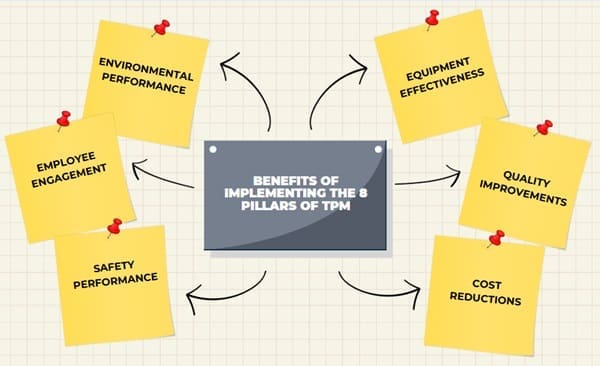
Organizations that successfully implement the eight pillars of TPM experience significant improvements across multiple performance dimensions:
- Equipment Effectiveness: Reduced breakdowns, improved availability, and increased overall equipment effectiveness. Companies typically achieve 85-95% OEE levels through systematic TPM implementation.
- Quality Improvements: Significant reductions in defect rates and quality-related costs. Many organizations achieve near-zero defect levels through effective quality maintenance programs.
- Cost Reductions: Lower maintenance costs, reduced inventory requirements, and improved labor productivity. The combination of preventive maintenance and autonomous maintenance typically reduces total maintenance costs by 15-30%.
- Safety Performance: Improved safety records through systematic hazard identification and risk management. Organizations often achieve significant reductions in workplace injuries and incidents.
- Employee Engagement: Higher levels of employee involvement and job satisfaction through increased responsibility and skill development. TPM creates opportunities for meaningful participation in improvement activities.
- Environmental Performance: Reduced waste generation, improved energy efficiency, and better environmental compliance. Well-maintained equipment typically operates more efficiently and generates less waste.
Also Read: What is Total Quality Management?
Common Implementation Challenges and Solutions of Pillars of TPM
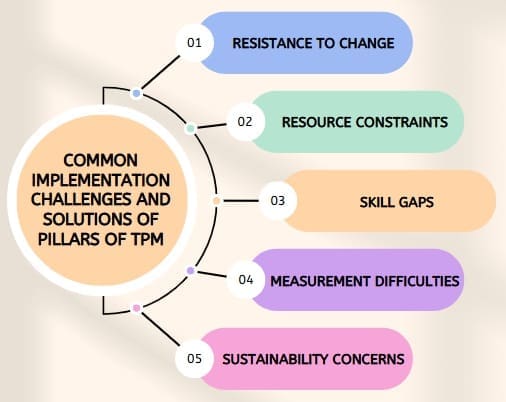
Resistance to Change: Address through comprehensive communication, training, and involvement programs. Demonstrate early wins and celebrate successes to build momentum and support.
Resource Constraints: Develop phased implementation plans that prioritize high-impact activities. Seek creative ways to reallocate existing resources rather than requiring significant new investments.
Skill Gaps: Implement systematic training programs that build capabilities gradually. Partner with equipment suppliers, consultants, and educational institutions to access specialized expertise.
Measurement Difficulties: Establish baseline measurements and implement systematic data collection processes. Focus on leading indicators that predict future performance rather than just lagging results.
Sustainability Concerns: Develop robust management systems that institutionalize TPM practices. This includes standard operating procedures, audit systems, and continuous improvement processes.
Measuring TPM Success: Key Performance Indicators
Equipment Performance Metrics
- Overall Equipment Effectiveness (OEE)
- Mean Time Between Failures (MTBF)
- Mean Time to Repair (MTTR)
- Planned maintenance compliance
- Emergency maintenance frequency
Quality Metrics
- Defect rates and quality costs
- Customer complaints and returns
- First-pass yield rates
- Rework and scrap costs
- Quality audit scores
Cost and Productivity Metrics
- Maintenance cost per unit produced
- Labor productivity improvements
- Inventory turnover rates
- Energy consumption per unit
- Total cost of ownership
Safety and Environmental Metrics
- Injury and incident rates
- Environmental compliance scores
- Waste generation rates
- Energy efficiency improvements
- Regulatory violations
Technology Integration in Modern TPM
Internet of Things (IoT) Sensors Real-time monitoring of equipment condition and performance parameters. IoT devices enable predictive maintenance strategies and automated data collection.
Artificial Intelligence and Machine Learning Advanced analytics for pattern recognition and failure prediction. AI systems can identify subtle changes in equipment behavior that indicate potential problems.
Mobile Technologies Smartphone and tablet applications that support maintenance activities in the field. Mobile technology improves data collection, work order management, and communication.
Augmented Reality (AR) Visual guidance systems that assist technicians during maintenance procedures. AR technology can overlay digital information onto physical equipment for enhanced troubleshooting.
Cloud Computing Centralized data storage and processing capabilities that support multi-site TPM implementations. Cloud platforms enable real-time collaboration and knowledge sharing.
Also See: Why They Fail Podcasts
Final Words
The eight pillars of TPM provide a comprehensive framework for achieving operational excellence through systematic maintenance management. By implementing these interconnected strategies, organizations can eliminate equipment-related losses, improve product quality, reduce costs, and create safer work environments.
Success requires commitment from all organizational levels, from senior leadership to front-line operators. The journey demands patience, persistence, and continuous learning, but the rewards justify the investment. Companies that master TPM principles achieve sustainable competitive advantages through superior equipment reliability and operational efficiency.
Therefore, begin your TPM journey today by selecting a pilot area and implementing the first pillar of autonomous maintenance. Build momentum through early wins, expand systematically, and celebrate achievements along the way. The path to manufacturing excellence starts with the first step toward TPM implementation.
Also Read: What is Total Preventive Maintenance
Frequently Asked Questions (FAQs) on Pillars of TPM
What are the 8 pillars of TPM?
The 8 pillars of TPM are: 1) Autonomous Maintenance, 2) Focused Improvement (Kaizen), 3) Planned Maintenance, 4) Quality Maintenance, 5) Early Equipment Management, 6) Training and Education, 7) Safety, Health, and Environment, and 8) Office TPM. These pillars work together to create a comprehensive maintenance management system.
How long does it take to implement all 8 pillars of TPM?
Full TPM implementation typically takes 3-5 years, depending on organization size and complexity. Most companies see significant improvements within the first 12-18 months of implementation, with pilot areas showing results even sooner.
Which TPM pillar should be implemented first?
Most organizations start with Autonomous Maintenance (Pillar 1) because it builds operator engagement and provides a foundation for other pillars. However, some companies begin with Focused Improvement to demonstrate quick wins and build momentum.
What is the difference between TPM and traditional maintenance?
Traditional maintenance is typically reactive and performed by specialized maintenance teams. TPM is proactive and involves all employees in maintenance activities. TPM focuses on preventing problems rather than just fixing them after they occur.
How do you measure the success of TPM implementation?
Success is measured through multiple metrics including Overall Equipment Effectiveness (OEE), Mean Time Between Failures (MTBF), quality defect rates, maintenance costs, safety incidents, and employee engagement scores. Most successful implementations achieve OEE levels above 85%.
What are the main challenges in implementing TPM?
Common challenges include resistance to change, lack of skills and training, insufficient management support, competing priorities, and difficulty maintaining momentum. Success requires strong leadership commitment and systematic change management approaches.

About Six Sigma Development Solutions, Inc.
Six Sigma Development Solutions, Inc. offers onsite, public, and virtual Lean Six Sigma certification training. We are an Accredited Training Organization by the IASSC (International Association of Six Sigma Certification). We offer Lean Six Sigma Green Belt, Black Belt, and Yellow Belt, as well as LEAN certifications.
Book a Call and Let us know how we can help meet your training needs.



